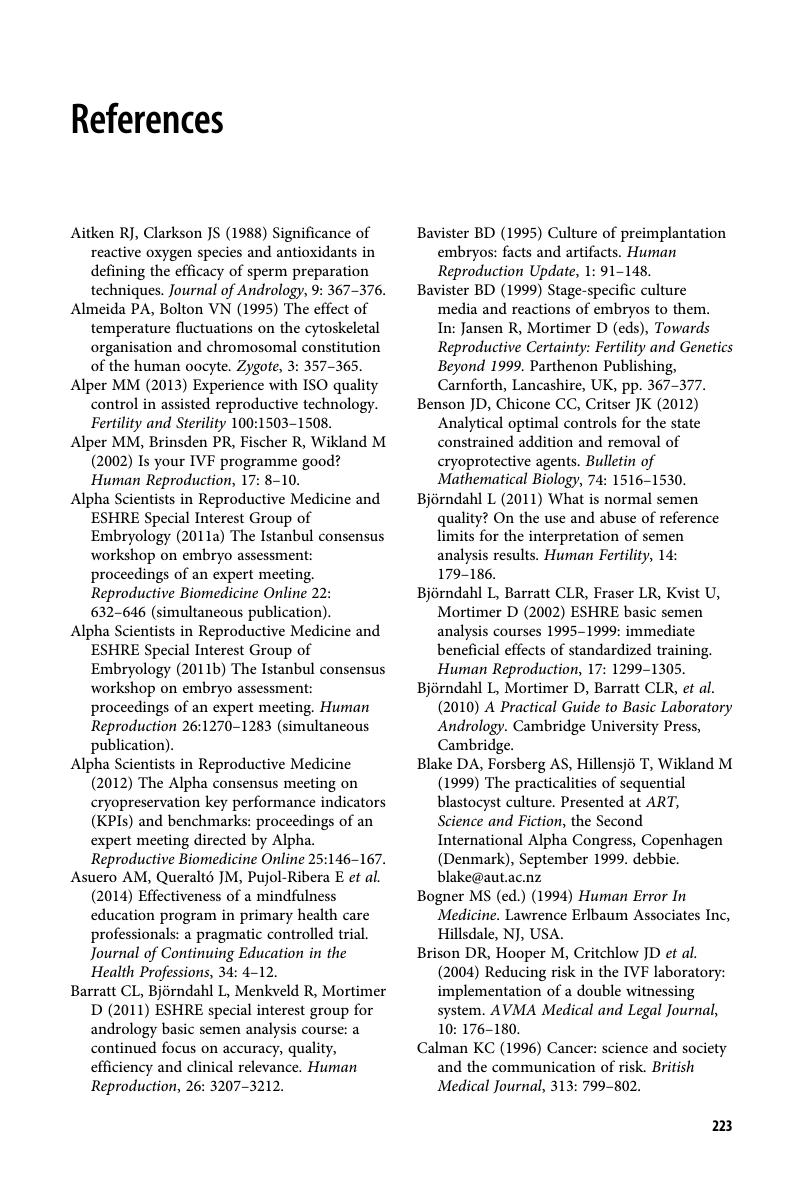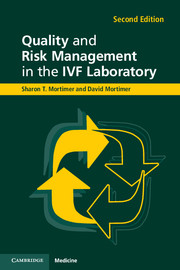Book contents
- Half title page
- Title page
- Copyright page
- Contents
- Chapter 1 Introduction
- Chapter 2 Regulation, licensing, and accreditation
- Chapter 3 Quality and quality management
- Chapter 4 What is risk?
- Chapter 5 Process and systems
- Chapter 6 Making it work
- Chapter 7 Quality and risk management tools
- Chapter 8 What’s gone wrong?:troubleshooting
- Chapter 9 Risk management: being proactive
- Chapter 10 How are we doing?: benchmarking
- Chapter 11 Specifyingsystems
- Chapter 12 Humanresources: finding (and keeping) the right staff
- Chapter 13 Illustrative example of a well-controlled laboratory
- Chapter 14 Is the “well-run lab” enough?: quality and risk management in the IVF clinic
- Bibliography
- Index
- References
Bibliography
Published online by Cambridge University Press: 05 March 2015
- Half title page
- Title page
- Copyright page
- Contents
- Chapter 1 Introduction
- Chapter 2 Regulation, licensing, and accreditation
- Chapter 3 Quality and quality management
- Chapter 4 What is risk?
- Chapter 5 Process and systems
- Chapter 6 Making it work
- Chapter 7 Quality and risk management tools
- Chapter 8 What’s gone wrong?:troubleshooting
- Chapter 9 Risk management: being proactive
- Chapter 10 How are we doing?: benchmarking
- Chapter 11 Specifyingsystems
- Chapter 12 Humanresources: finding (and keeping) the right staff
- Chapter 13 Illustrative example of a well-controlled laboratory
- Chapter 14 Is the “well-run lab” enough?: quality and risk management in the IVF clinic
- Bibliography
- Index
- References
Summary

- Type
- Chapter
- Information
- Quality and Risk Management in the IVF Laboratory , pp. 223 - 228Publisher: Cambridge University PressPrint publication year: 2015



